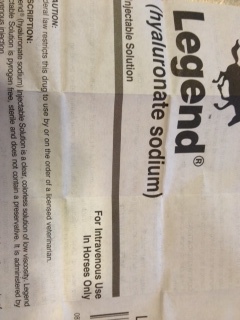I agree, but consider the daunting challenges. Most top hunter judges have sold the ponies/horses that are showing in their rings. They’ve promoted them as “the hack winners” or being “quiet as church mice.” This is just the economic truth given the fact that those who judge and train may also sell. When you have a vested interest in performance, it undermines objectivity, regardless how objective you think you might be (and I believe that many judges try like crazy to be fair, even while occasionally glancing down at cell phones). So hunter and eq trainers subscribe to the “do no wrong” theory of making the horses and ponies so quiet that they practically fall over the jumps (just watch the videos from Indoors and the (chortle) National Horse Show). And, to be honest as well, how many mommies and daddies want to schlep their precious kids to showgrounds at 4am so that the horses/ponies can be flatted and prepped without ridiculous amounts of lunging or drugs? Been there, at 4am, and I can say that there are a scant few!
This system is really broken at the base and requires bravery and total re-engineering to fix it! It’s also one of the reasons why hunter derbies, originally envisioned to restore excitement and playfulness, have been dumbed down to elongated classics. People with vision and brass need to step in but it’s not going to be incumbents with vested, parochial interests. I read the USEF’s statements and I will no longer support this spineless drivel. And I hope that I will never see another cover of InStride, featuring such hypocrisy. God bless The NYT!
[QUOTE=RanchoAdobe;6747702]
I’d love to discuss more Julie’s point of view- change the incentives and the behavior will change accordingly.
Change the judging and many problems will be solved (though how to change judging is also a great discussion topic). If horses are not rewarded, as they are currently, for robotic appearances than in turn less horses will be drugged to win in the ring (and less lunging/riding/schooling may also lead to less need for soundness type drugs as well?).
Also, I have heard and agree with talk of changing courses. The current simple courses (single, side, diagonal, side) promote robotic, metronome performances. Less related distances, more singles, less groundlines will, perhaps, reward pace and more “spark” in the hunter ring. Why can’t the hunter ring move more towards the derby ideal?
Any other ideas on how to change the game, so to speak. Every poster on this forum has brought up the difficulties of focusing only on the drug rules/enforcement. The cost of vet only administered injections and problems with FEI type stabling, the difficulty of testing for “naturally occuring” drugs such as Mg, how to decipher between performance enhancing and legitimate comfort.
… so what else can we do to eliminate the incentives for abuse?[/QUOTE]


